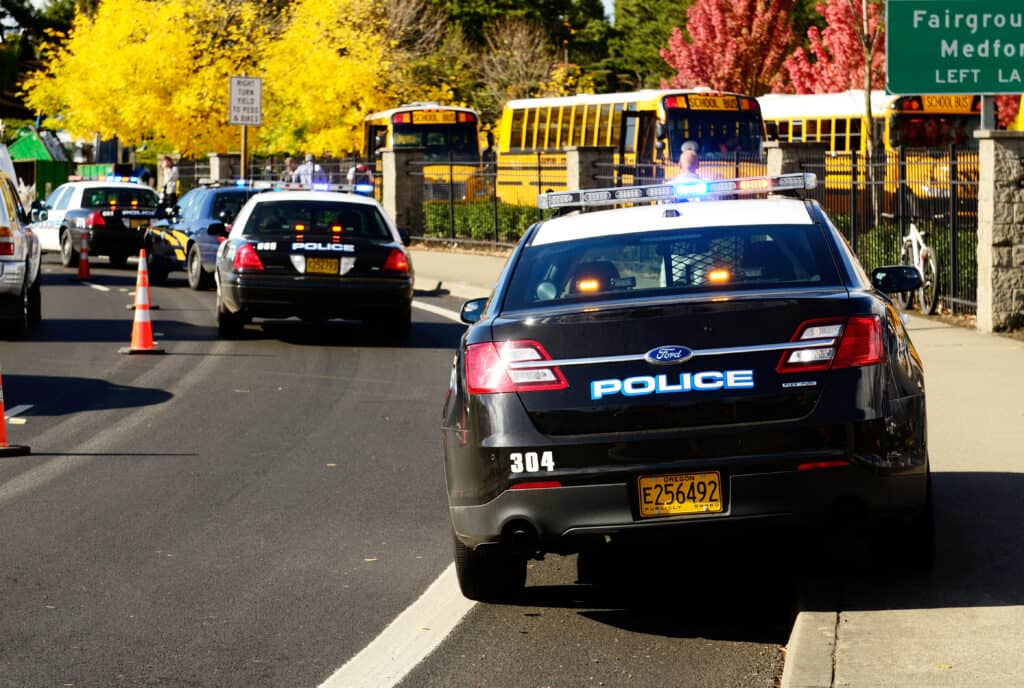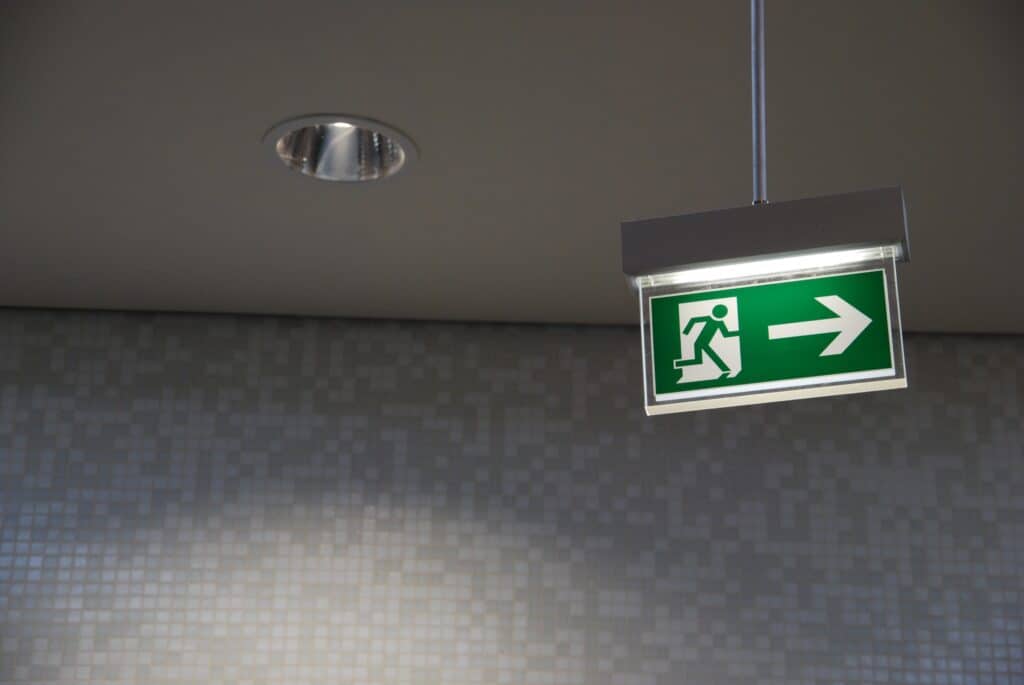Reverse evacuations are critical procedures for ensuring the safety of students and staff in schools during emergencies.
These plans come into play when it is safer to remain inside the building rather than evacuating to an outside location.
In such cases, the primary goal of reverse evacuation is to move all individuals who are outside the building into a designated, secure area within the school as quickly and efficiently as possible.
Emergencies can arise in many forms, such as severe weather conditions or security threats from outside the school.
During these incidents, proper implementation of a reverse evacuation protocol can mean the difference between life and death.
Various organizations like Safe Havens International emphasize the importance of such procedures to ensure student and staff safety during unforeseen events.
Often used in conjunction with lockdown or shelter-in-place plans, reverse evacuations require careful planning and coordination to ensure a timely and organized response.
Schools need to establish designated indoor areas that can accommodate the student population and maintain regular training exercises to familiarize staff and students with the appropriate actions to take in the event of an emergency.
Understanding Reverse Evacuations
Reverse evacuations are an important aspect of school safety and crisis response.
In a reverse evacuation, students and staff are brought inside the school building when it is deemed safer than remaining outdoors.
This type of emergency procedure can occur during various situations, such as a sudden severe weather event, a hazardous material incident, or the presence of an armed aggressor near the campus.
When a reverse evacuation is called, it is crucial for students and staff already outdoors to move indoors quickly and efficiently.
The decision to order a reverse evacuation could be made by any staff member who detects danger outside the building while students are present.
To implement an effective reverse evacuation, schools should have clear procedures in place.
Some key steps for a successful reverse evacuation include:
- Establishing an alert system to inform staff and students of the need for a reverse evacuation
- Training staff and students on the appropriate response to a reverse evacuation order, including designated routes and entry points to be used
- Preparation for providing support for individuals with disabilities, special needs, or who may require additional assistance during the process
- Identifying accountable measures for tracking and documenting the whereabouts of all students and staff during the reverse evacuation
Reverse evacuations are an essential component of a school’s crisis response plan, helping to ensure the safety and well-being of students and staff when unexpected or rapidly developing situations occur.
Planning for Reverse Evacuations
Assessing Threats and Vulnerabilities
Before developing a reverse evacuation plan, schools need to identify and assess the potential threats and vulnerabilities in their environment.
It is essential to consider various scenarios, such as gas leaks, hazardous material spills, and nearby criminal activity, that may require a reverse evacuation procedure.
Identifying these hazards helps schools prioritize their response strategies and allocate resources effectively.
Creating Procedures and Protocols

Once potential threats have been identified, schools should establish clear procedures and protocols for reverse evacuations.
These should outline the decision-making process for determining when a reverse evacuation is necessary and the designated safe locations on campus, such as classrooms or auditoriums, where students and staff should assemble.
It is crucial to ensure all school personnel are familiar with the established procedures, as well as their specific roles and responsibilities during a reverse evacuation.
Communication is critically important during an emergency, so the reverse evacuation plan should include a system for informing students, staff, and parents.
This can involve using PA systems, text messages, or emails to provide timely updates and instructions.
Additionally, schools should integrate emergency communication drills into their regular training to reinforce the importance of clear communication during emergency situations.
Coordinating with Local Authorities
Coordinating with local authorities, such as law enforcement, first responders, and emergency management agencies, is an integral aspect of planning for reverse evacuations.
Collaboration helps to ensure that response procedures are consistent with best practices and can effectively mitigate the impact of an emergency.
Schools should also consult with local authorities when establishing evacuation and reunification points that are consistent with broader community emergency plans.
Regularly reviewing and updating the reverse evacuation plan is essential for maintaining its effectiveness.
By incorporating insights and lessons learned from drills, as well as feedback from students, staff, and local authorities, schools can ensure that their reverse evacuation procedures remain current and adaptable to changing circumstances.
Training and Drills
Staff Training
Effective reverse evacuation plans depend on well-trained staff who understand their roles and responsibilities.
All staff members should receive training in the proper procedures and protocols, including knowing when to initiate a reverse evacuation and how to move students safely and efficiently indoors.
School personnel, such as teachers, administrators, and support staff, should be educated on their specific duties and responsibilities during an emergency.
Conducting Drills
Reverse evacuation drills are an essential component of an effective emergency response plan.
Regular practice helps students and staff become familiar with the steps they need to take during a real event.
As part of their overall crisis exercises, The National Association of School Psychologists recommends that schools conduct various drills, including reverse evacuation drills, to ensure that all stakeholders understand the processes and procedures.
Drills should be executed at different times of the day and under various conditions to familiarize everyone with different scenarios.
This includes practicing reverse evacuations when students and staff are outdoors for recess, class changes, or during other outdoor activities.
After-Action Reviews and Improvements
Following each reverse evacuation drill, an After-Action Review (AAR) should be conducted.
This involves gathering staff feedback, identifying gaps and areas for improvement, and implementing changes to refine procedures.
Schools can then make adjustments to their emergency plans based on what has been learned from these evaluations.
Ensuring that all staff members have an opportunity to provide input into the AAR process helps to create an inclusive and collaborative environment.
This, in turn, fosters a greater sense of teamwork and preparedness in the event of an actual emergency requiring a reverse evacuation.
Communication Strategies

Effective reverse evacuation plans require clear and organized communication strategies to ensure the safety of students, staff, and the school community.
Internal Communication
Establishing a reliable internal communication system is crucial for coordinating the safe movement of students and staff into the school building during a reverse evacuation.
Staff members should be trained to use various communication tools, such as two-way radios, intercom systems, or mobile phones to communicate during an emergency.
Here are some important communication practices for internal communication:
- Designate a clear chain of command for communication.
- Communicate clear, concise, and accurate information to everyone involved.
- Make use of multiple communication channels to increase the likelihood of message reception.
- Keep staff and students informed of the situation’s progress and next steps.
External Communication
During a reverse evacuation, schools also need to communicate information to parents, community members, and emergency personnel.
This requires a coordinated effort from the school administration and staff.
The following external communications steps should be followed:
- Designate a spokesperson, often a school administrator or communications staff member, who provides official updates to external stakeholders.
- Utilize various channels, such as social media, phone calls, text messages, and email, to notify parents and community members of the ongoing situation.
- Collaborate with local emergency responders and public safety agencies to help manage the situation.
- Ensure timely and accurate information is disseminated, avoiding misinformation or panic.
In conclusion, a well-thought-out communication strategy is vital for the successful implementation of a reverse evacuation plan in schools.
Both internal and external communication processes should be clearly defined, and all relevant parties should be well-informed of their roles and responsibilities during an emergency.
Key Components of a Reverse Evacuation Plan
A reverse evacuation plan is crucial for ensuring the safety of students and staff in schools during emergencies.
This section outlines some of the essential components that a comprehensive reverse evacuation plan should include.
First and foremost, the plan should have a clear communication system.
This system should facilitate the prompt dissemination of information and instructions, such as sounding alarms or making announcements for reverse evacuations.
Second, the plan should consider the group sizes during outdoor activities. Smaller groups, such as those during lunch periods and recess, will make it easier to manage reverse evacuations.
Schools should be prepared to manage varying group sizes and have designated staff members responsible for leading each group back into the building.
Another component of a successful reverse evacuation plan is to have well-defined entry points.
These points should be easily accessible and, ideally, should allow multiple entry points to avoid overcrowding and confusion during the reverse evacuation process.
Additionally, it is essential to train staff and students on reverse evacuation procedures.
This training should be conducted regularly and incorporated into other emergency drills, such as lockdown and shelter-in-place drills.
In summary, a sound reverse evacuation plan should focus on clear communication, accommodating various group sizes, well-defined entry points, and regular training for staff and students.
Implementing these key components will help schools prepare for and respond to emergencies efficiently and effectively.
Legal and Regulatory Considerations
When implementing reverse evacuations in schools, it is essential to consider the legal and regulatory landscape surrounding emergency response in educational institutions.
Laws and regulations often dictate the number and types of drills schools must conduct each academic year.
It is crucial for school administrators to ensure that reverse evacuations are incorporated into their emergency response plans according to these legal requirements.
Schools must consult with local authorities, such as emergency management agencies or law enforcement, to develop appropriate reverse evacuation procedures tailored to their specific circumstances.
Additionally, schools should consider the potential liability that may arise from not having adequate reverse evacuation procedures in place.
Failing to respond effectively to an emergency situation could expose educational institutions to legal actions by affected students, staff, and parents.
In terms of best practices, schools should:
- Develop clear and concise reverse evacuation protocols
- Regularly train and educate staff, students, and parents on these procedures
- Coordinate with local emergency management and law enforcement agencies
- Keep abreast of current legal and regulatory requirements
By adhering to these guidelines and consistently reviewing and updating reverse evacuation procedures, schools can ensure the safety of their students and staff during emergency situations, while remaining compliant with legal and regulatory considerations.
Lessons Learned
One key lesson learned from a school active shooter exercise is the importance of effective communication between school officials, staff members, and emergency responders.
Clear communication is crucial for disseminating accurate information and instructions to ensure everyone inside the school knows what to do.
An essential part of reverse evacuation is conducting regular drills and training.
Understanding the process is vital for both staff and students to ensure a faster and more orderly response during an actual emergency.
Having a well-prepared and confident staff can save lives in critical situations.
Below are a few additional lessons learned from real-life examples and drills:
- Establish a clear chain of command to avoid confusion during an emergency.
- Designate specific areas within the school as safe zones or refuges during a reverse evacuation.
- Ensure everyone knows their responsibilities and roles during the process.
- Develop an effective and timely notification system for parents and guardians.
By examining real-life examples and incorporating lessons learned, schools can improve their reverse evacuation plans to better protect students and staff during emergencies.
Conclusion
In the interest of providing a safe and secure environment for students and staff, incorporating a Reverse Evacuation protocol into school emergency plans is essential.
This measure addresses situations when it is safer for individuals to remain inside the building, rather than evacuating to an outdoor location.
Proactive planning and routine practice of reverse evacuations can significantly increase the effectiveness of a school’s response to potential threats, such as severe weather or hazardous materials exposure.
Clear communication and cooperation among school personnel, law enforcement, and emergency response teams are vital for the successful implementation of these protocols.
Considering the unpredictable nature of emergencies, schools must ensure they have a multifaceted approach to crisis response.
This includes creating designated safe areas within the building and regularly updating emergency plans in consultation with experts in the field.
Ultimately, the implementation of reverse evacuation procedures contributes to the overall safety of the school community, demonstrating a commitment to preparedness and the well-being of students and staff alike.
Looking to improve your school’s safety and security protocols? Look no further! Our team offers comprehensive training and consulting services for Guardian Programs, Emergency Operations, Safety & Security Audits, Customized Training, and more. Don’t wait until it’s too late to ensure the safety of your students and staff. Contact us today to schedule a consultation and take the first step towards a safer school environment.








